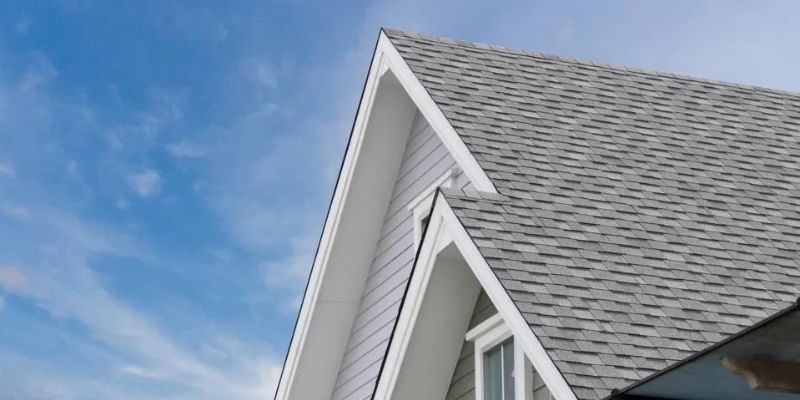Roofs are an essential component of any building, providing protection and insulation from the elements. As a homeowner, it’s natural to wonder how long your roof will last before requiring replacement. In this article, we will delve into the factors that affect a roof’s lifespan, common signs of roof deterioration, maintenance practices, and address frequently asked questions surrounding this topic. So, let’s dive in and explore “How Long Does a Roof Typically Last?”
How Long Does a Roof Typically Last?
A roof’s lifespan can vary depending on several factors. Here are some key bullet points to consider when determining how long a roof typically lasts:
- The type of roofing material used, such as asphalt shingles, metal, clay tiles, or slate.
- The quality of the materials and installation.
- The climate and weather conditions in your area.
- The level of maintenance and regular inspections.
- The presence of any natural disasters like hurricanes or earthquakes.
- The ventilation and insulation of your attic.
- The amount of direct sunlight the roof receives.
Factors That Influence Roof Lifespan
Several factors affect the lifespan of a roof. Understanding these factors can help you better gauge how long your roof will last. Let’s explore them in detail:
-
Roofing Material
Different roofing materials have varying lifespans. Here are some common options and their approximate lifespans:
- Asphalt Shingles: 20 to 30 years
- Metal: 40 to 70 years
- Clay Tiles: 50 to 100 years
- Slate: 70 to 200 years
-
Quality of Materials and Installation
The quality of both the roofing materials and the installation process can significantly impact the longevity of your roof. Investing in high-quality materials and hiring experienced professionals for installation is crucial for a long-lasting roof.
-
Climate and Weather Conditions
Harsh weather conditions, such as heavy rain, snow, hail, or extreme heat, can shorten a roof’s lifespan. Regions with severe weather patterns may require more frequent maintenance and repairs.
-
Maintenance and Regular Inspections
Proper maintenance and regular inspections play a vital role in extending a roof’s lifespan. Regularly clearing debris, checking for leaks, and addressing minor issues promptly can prevent significant damage and prolong the life of your roof.
-
Natural Disasters
Areas prone to natural disasters, like hurricanes or earthquakes, can experience more roof damage. Building codes and regulations specific to these regions often dictate the installation and materials used to withstand such events.
-
Attic Ventilation and Insulation
A well-ventilated attic helps regulate temperature and prevents moisture buildup, reducing the strain on the roof. Additionally, adequate insulation can prevent ice dams from forming, which can cause roof leaks.
-
Sun Exposure
Excessive exposure to direct sunlight can deteriorate certain roofing materials more quickly. Roofing materials with high UV resistance are better equipped to withstand prolonged sun exposure.
FAQs about Roof Lifespan
Q: How long does an asphalt shingle roof typically last?
A: Asphalt shingle roofs generally last around 20 to 30 years, depending on factors such as climate and maintenance.
Q: What is the lifespan of a metal roof?
A: Metal roofs can last between 40 to 70 years with proper maintenance. Their durability makes them an attractive long-term investment.
Q: Do clay tiles last longer than other roofing materials?
A: Yes, clay tiles have an impressive lifespan of 50 to 100 years. Their durability and aesthetic appeal make them a popular choice in certain regions.
Q: Can regular maintenance extend the lifespan of a roof?
A: Absolutely! Regular maintenance, including inspections, repairs, and clearing debris, can significantly prolong the lifespan of a roof.
Q: Should I be concerned about roof damage from extreme weather?
A: If you live in an area prone to severe weather conditions, it’s essential to take necessary precautions and invest in materials that can withstand such events.
Q: How does attic ventilation impact roof longevity?
A: Proper attic ventilation helps regulate temperature and reduces moisture buildup, preventing premature roof deterioration.
Wrap Up
Understanding how long a roof typically lasts is crucial for homeowners. By considering factors such as roofing material, climate, maintenance, and insulation, you can estimate the lifespan of your roof more accurately. Regular maintenance and inspections are vital for preserving your roof’s integrity and extending its lifespan.
Remember, investing in quality materials and professional installation can make a significant difference in how long your roof lasts. Take proactive measures to protect your roof, and it will serve you faithfully for many years to come


I’ll certainly bring to be familiar with more.